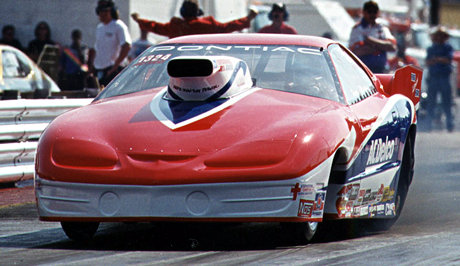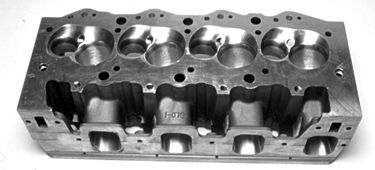|
|
||||
Nitrous Tech for Pro Mods |
||||
|
Nitrous oxide-injected Pro Modifieds have been mired in the 6.30's since Shannon Jenkins and others found the 6.30 zone during IHRA's 1998 season. That year Jenkins ran the low elapsed time for nitrous cars at 6.31 and Scotty Cannon recorded the low elapsed time for blower cars at 6.32. In 1999, Troy Critchley driving for Johnny Rocca dropped the standard for the supercharged set by a tenth to 6.22 while the quickest lap recorded by a nitrous car was a 6.307 by Tommy Mauney run at the last race of that season. As of September 2000 the quickest elapsed time for a nitrous car is a 6.324 achieved by both Quain and Mitch Stott. The quickest time for a blown car this year is a 6.179 which Fred Hahn driving for Jim Oddy accomplished prior to a litany of rule changes that slowed the supercharged cars to the 6.40s. In the last three years the blower cars have made steady progress in lowering elapsed times while the nitrous cars remain stagnant. This despite reducing the minimum weight for the nitrous cars by 50-lbs this year. IHRA president Bill Bader has stated that he wants to make the Pro Mod class the home of the quickest and fastest doorslammers in drag racing. He has also stated that he wants the nitrous cars to run comparable times to the blower cars and for both of them to approach the fives. With that goal in mind Drag Racing Online decided to look at some of the technical advances that could be applied to help the nitrous oxide-injected cars develop the power needed to put them into the 6.0/230 range, and maybe into the mythical fives. 810 c.i. NITROUS ENGINES Tuner and supercharged engine builder Jim Oddy has said that he might consider building an 810-inch nitrous engine because he believes it has the potential to make the power his supercharged engines currently do, and he can race a lighter car without the weight, gear, and clutch disc penalties imposed on a blown car. Some of the new technology he has said he would use to build a nitrous engine include using a Chevy-style billet block which he would have made with Hemi-style cross bolting for the crank to reduce flex. And you can bet the block would have five-inch bore-centers so that he could use the new high flow heads currently being developed for that block. The 2001 season will see IHRA, for the first time, allow billet heads to be used in Pro Modified. The thermal qualities of these heads as well as their increased durability may enable an 800-inch nitrous motor to develop the same power as a supercharged engine combination, especially if the builder uses the cylinder heads and intakes used by the IHRA Pro Stock engine builders.
|
||||
|
Copyright 1999-2001, Drag Racing Online and Racing Net Source |
||||


 Drag
Racing Online keeps hearing that one of the options IHRA is considering
for 2001 is to give the nitrous motors an additional 100 cubic inches
of engine displacement, raising the maximum to 810 cubic inches. One
of the premier builders of these size engines is Sonny Leonard. Leonard
feels that with the current technology, just increasing cubic inches
by 100 may only improve the ET by three- to five-hundreths. He also
said that an 810-inch engine, due to its larger bore size, would have
more detonation problems than a similar 710 engine. Another concern
he had was crankshaft failures due to the inherent crank flex found
in an 810-inch engine.
Drag
Racing Online keeps hearing that one of the options IHRA is considering
for 2001 is to give the nitrous motors an additional 100 cubic inches
of engine displacement, raising the maximum to 810 cubic inches. One
of the premier builders of these size engines is Sonny Leonard. Leonard
feels that with the current technology, just increasing cubic inches
by 100 may only improve the ET by three- to five-hundreths. He also
said that an 810-inch engine, due to its larger bore size, would have
more detonation problems than a similar 710 engine. Another concern
he had was crankshaft failures due to the inherent crank flex found
in an 810-inch engine.